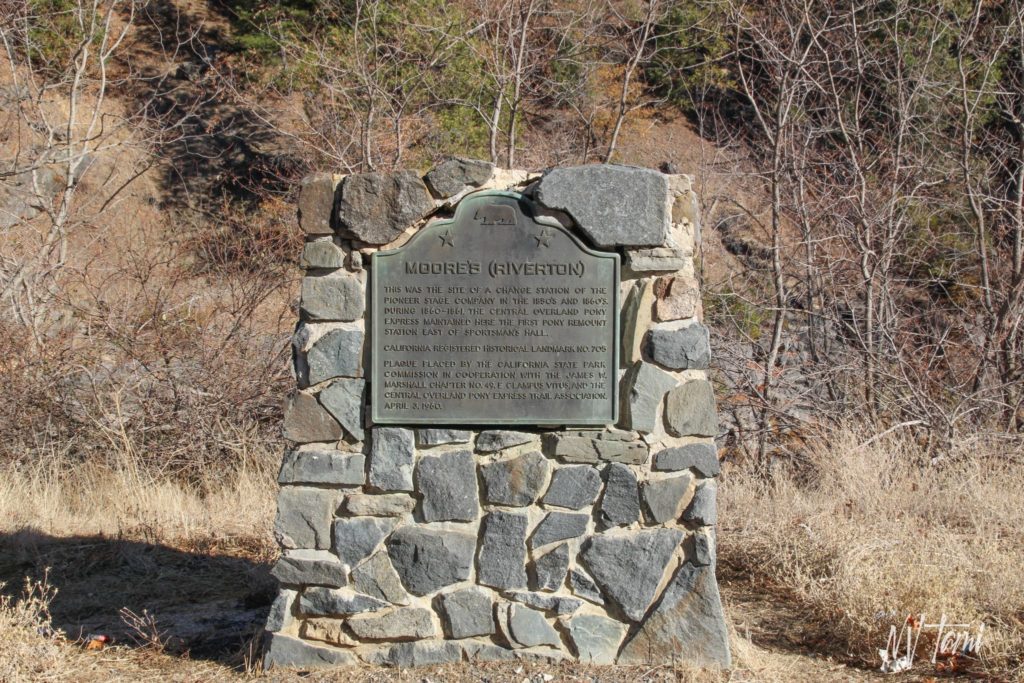
John M. Moore operated a toll road along the South Fork of the American River on the west side of the Sierra Nevada Mountains. The pass connected Hangtown (Placerville) and Lake Bigler (Tahoe) and was part of the California Emigrant Trail. From the 1850s through 1860s the road and stage stop was used by the Pioneer Stage Company.

The Pony Express operated between April 3, 1860 and October 26, 1861. Moore’s Station became a remount station where riders would exchange their tired horse for a fresh mount. Pony Express Stations were between fifteen and twenty miles apart, depending on circumstances. Riders would cover about seventy-five miles a day, changing horses three to four times at remount stations. Larger Home Stations housed riders between their rides.
Wanted: Young, skinny, wiry fellows not over eighteen. Must be expert riders, willing to risk death daily. Orphans preferred.
Pony Express Advertisement
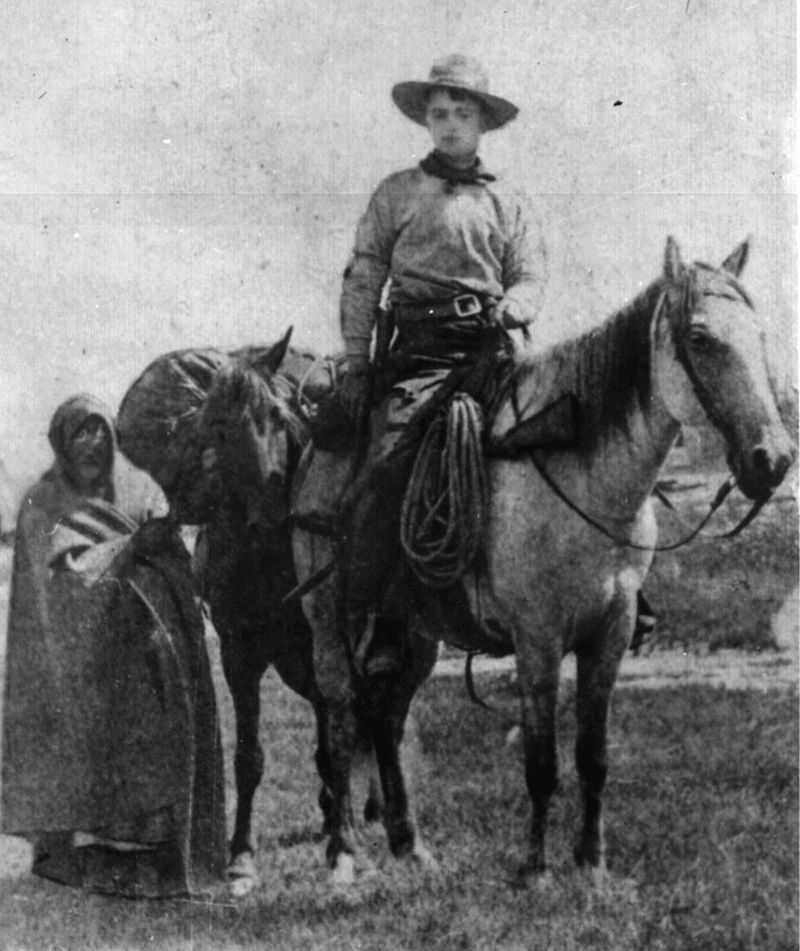
Overland Pony Express had strict requirements for riders to accomplish the 10 day ride between St. Joseph, Missouri and Sacramento, California. They could weight between one hundred and one-hundred-twenty-five pounds. The youngest rider was 11 year old Charlie “Bronco” Miller. They swore an oath and risked termination upon breech. But, famed author Richard Burton wrote, he:
..scarcely ever saw a sober rider
Richard Burton
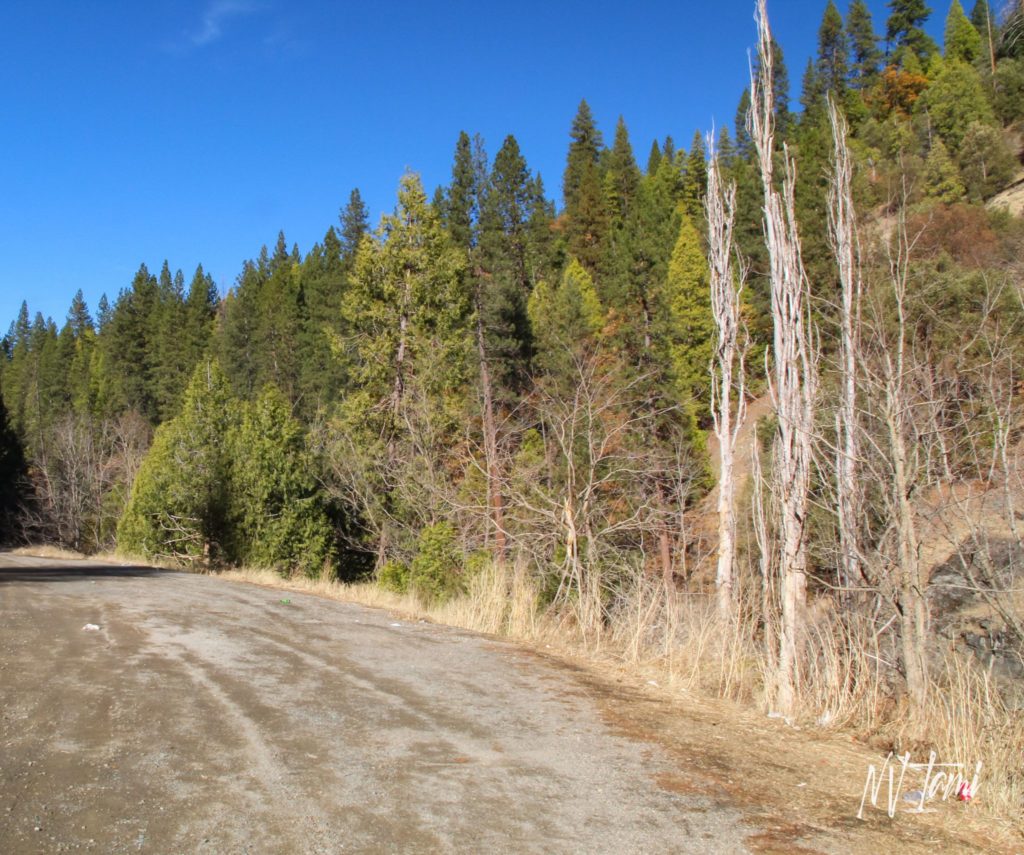
Pony Express had eighty riders at a time going either direction, 400 station keepers, stock tenders and route superintendents. Riders earned a handsome $100 to $150 a month. Station keepers were essential to smooth operation of the Pony Express.
(Photo credits: Landmark Adventures & Sierra Nevada Geotourism)
Moore’s Station was located west of Sportsman’s Hall and east of Webster’s Pony Express Stations. Moore’s was 8.5 miles west of Kyburz at the modern intersection of Highway 50 and Ice House Road. The toll road remained private until El Dorado County purchased it in 1866, converting it to a public highway.
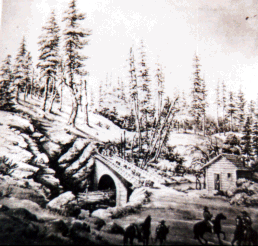
A small settlement, Riverton, grew around Moore’s Station. A post office operated in from 1893 to 1898. California Department of Transportation constructed a bridge at Moore’s Station in 1901. It was an 80 foot closed spandrel stone arch and had an obelisk at each corner. The bridge was replaced in 1930 and the obelisks were placed in storage.
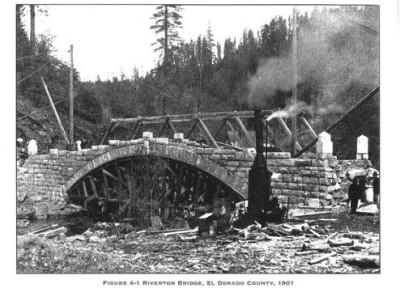
(Photo credit: Bridge Hunter)
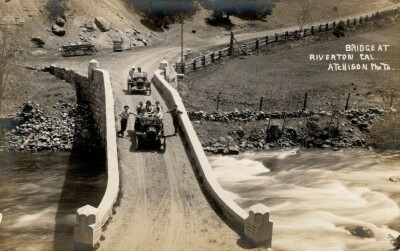
In 1990 California DOT placed the three remaining obelisks from the 1901 Riverton Bridge adjacent to a Pony Express Marker. The three remaining obelisks honored erecting of the bridge, governor, highway and road commissioners.
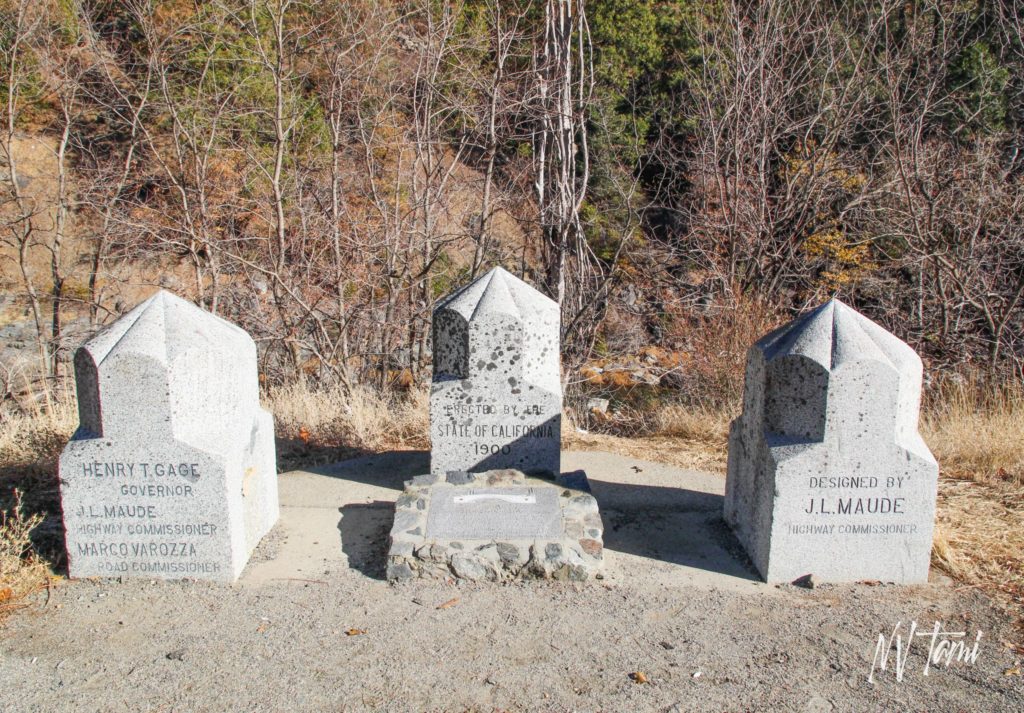
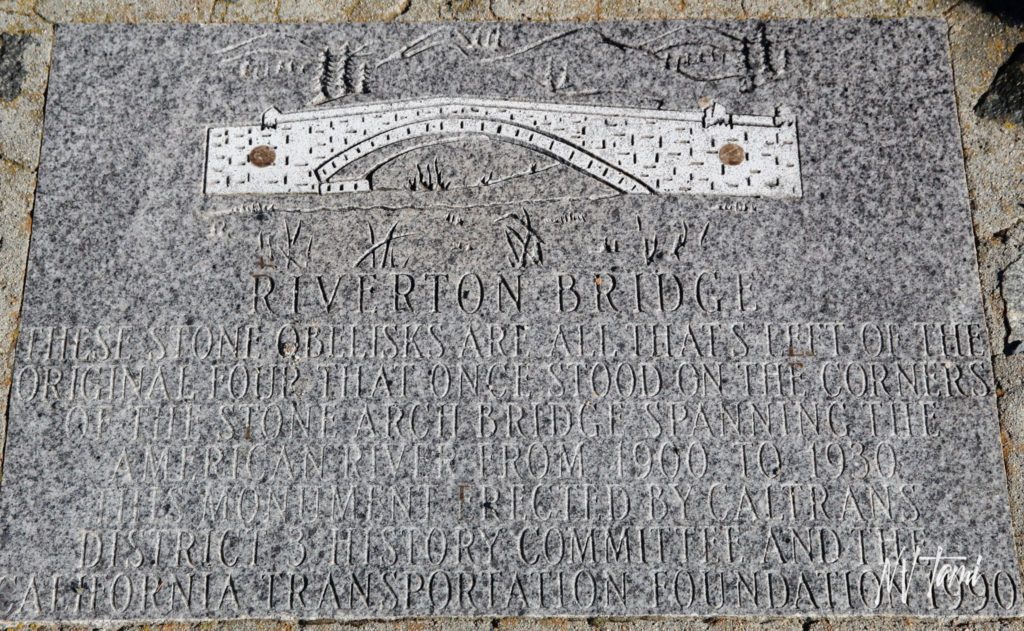
Riverton Bridge
Memorial Plaque
Visited: 12-3-2020, 10-21-2020
References
- Bridge Hunter: Riverton Bridge
- History.com: 10 Things you may not know about the Pony Express
- Landmark Adventures: Moore’s Station-Pony Express Route
- Landmark Adventures: Sportsman’s Hall
- National Bank Note Company: Pony Express 2 cent stamp
- Notes from the Frontier: The Pony Express: Rugged Riders on Fleet-footed Horses
- Sierra Nevada Geotourism: Webster’s Sugar Loaf House
- Wall Builders: “Broncho” Charlie Artifacts
- Wikipedia: Pony Express
- Wikipedia: Riverton, CA
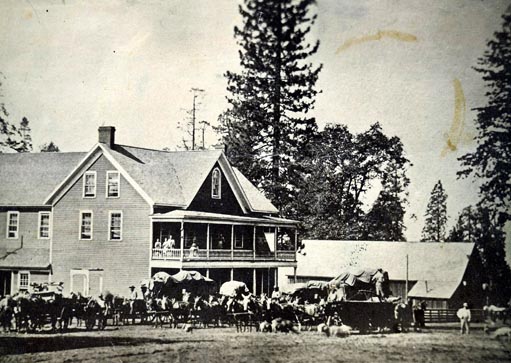

Leave a Reply